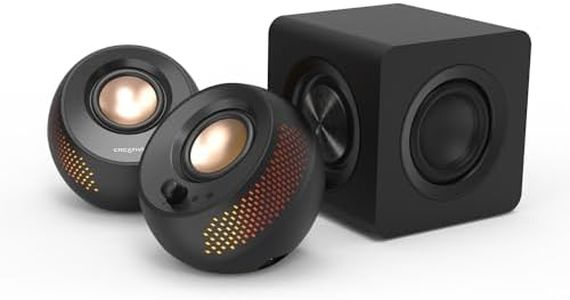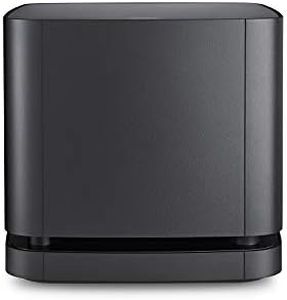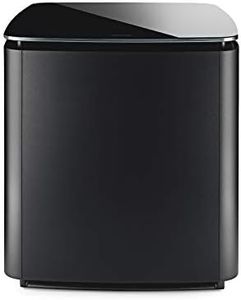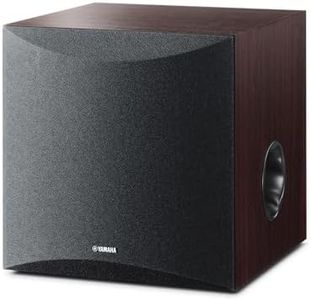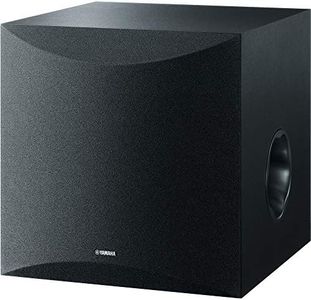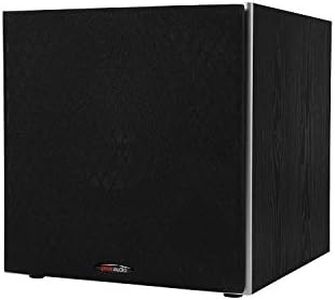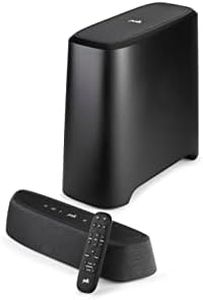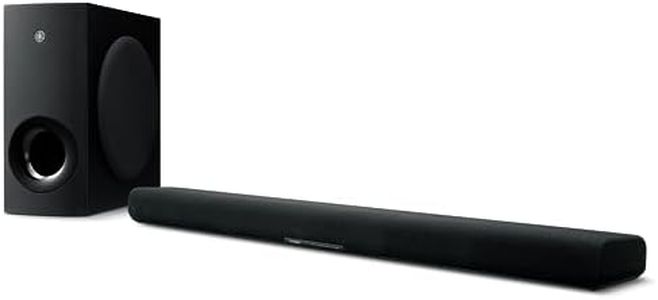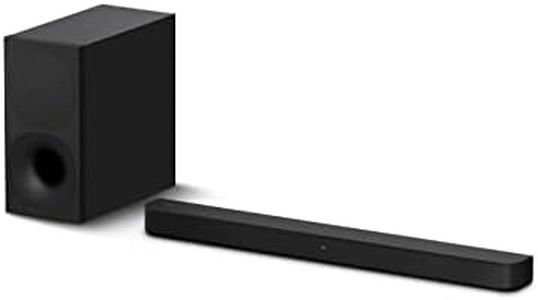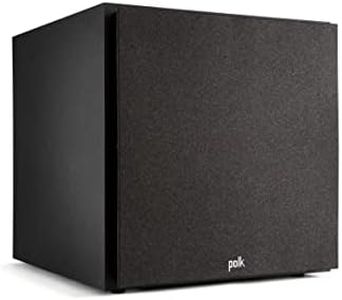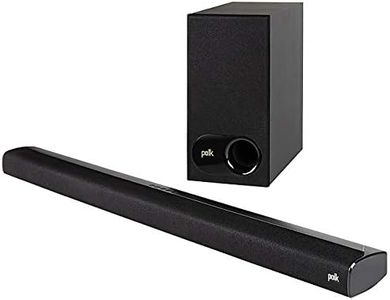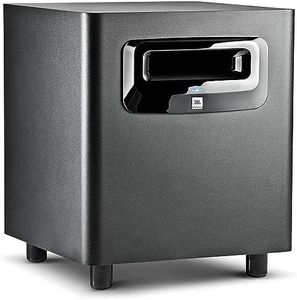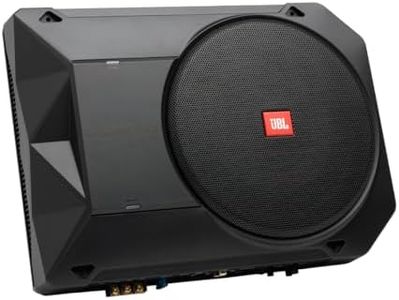We Use CookiesWe use cookies to enhance the security, performance,
functionality and for analytical and promotional activities. By continuing to browse this site you
are agreeing to our privacy policy
10 Best Subwoofer Speakers
From leading brands and best sellers available on the web.Buying Guide for the Best Subwoofer Speakers
Choosing a subwoofer speaker can greatly improve your audio experience, whether you’re setting up a home theater, a car sound system, or simply looking to add more depth to your music playback. A subwoofer’s main job is to reproduce very low-pitched audio frequencies known as bass. Picking the right subwoofer depends on your space, what you’re listening to, and how you want the bass to feel in your environment. Understanding the main specifications can help guide your decision so the subwoofer you choose matches your room, usage, and expectations.Size (Diameter of Driver, e.g., 8”, 10”, 12”)The size of the subwoofer driver, usually given in inches, refers to the diameter of the speaker cone. Larger drivers can generally move more air and produce deeper, louder bass, while smaller drivers are faster and may blend well with smaller speakers. If you have a large room or want movie-theater level bass, a larger driver (like 12” or more) might suit you. If space is limited or you just want a bit of extra punch without overpowering your room, a smaller size (8” or 10”) may be perfect.
Power Handling (Watts RMS and Peak)Power handling tells you how much power a subwoofer can safely handle, typically described by RMS (continuous power) and peak (maximum short burst) wattage. Higher RMS means the subwoofer can play louder and with more authority for longer periods. If you play music or movies at high volumes or want deep, room-filling bass, look for higher RMS values. For moderate or background listening, lower RMS ratings will be sufficient.
Frequency Response (Hz)Frequency response shows the range of low frequencies the subwoofer can reproduce, usually listed as the lowest frequency it can reach. A lower number means deeper bass. For example, a subwoofer that goes down to 20Hz will provide very deep bass, often felt as much as heard. If you’re a movie buff or enjoy bass-heavy music, aim for subwoofers with a lower frequency limit. For casual listening, you may not need the absolute lowest range.
Enclosure Type (Sealed vs. Ported)Enclosure type describes how the speaker is housed. A sealed box is airtight and tends to have tighter, more accurate bass, but may not be as loud. Ported boxes use an opening (port) to boost volume and are often preferred for larger spaces or where you want more powerful bass. If you want clean, precise bass for music, a sealed enclosure might be best. If maximum impact for movies or parties is your priority, consider a ported design.
Connectivity and InputsConnectivity refers to how you hook up the subwoofer to your audio system, including input types like RCA, speaker-level, or wireless options. Some subwoofers offer flexible connections for both home theater receivers and stereo setups, while others are more specialized. Consider your existing equipment: make sure the subwoofer has compatible connections and fits seamlessly into your setup.
Adjustable Controls (Crossover, Phase, Volume)These controls allow you to fine-tune the sound for the best blend with your other speakers. The crossover lets you set the upper frequency limit, so the sub blends smoothly with your main speakers. The phase switch or knob helps align the timing of bass waves for a fuller sound, and the volume control lets you balance the bass level to your liking. If you want flexibility and tailor your system to your room, pick a subwoofer with these adjustment options.
Placement and Size ConstraintsSubwoofers come in various shapes and sizes. Consider the physical space where you plan to place the subwoofer. Some are compact and easy to hide, while larger models may need more floor space. If you have limited room or specific placement needs (under a desk, in a corner, etc.), measure your space and choose a subwoofer that fits comfortably.
